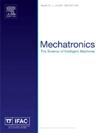Proving the stability of cycle navigation using capture sets
IF 3.1
3区 计算机科学
Q2 AUTOMATION & CONTROL SYSTEMS
引用次数: 0
Abstract
Navigating Autonomous Underwater Vehicles (AUVs) presents significant challenges due to the absence of traditional localization systems. Cycle navigation emerges as a promising paradigm, enabling reliable navigation using minimal exteroceptive measurements. This approach leverages predefined cyclic trajectories, which are stabilized based on environmental feedback, ensuring frugal and discreet operations without reliance on high computational power or extensive sensor systems. This work aims to prove the stability of the cycle navigation. As cycle navigation is a non-linear system governed by a discrete inclusion condition, conventional methods have trouble to prove its stability. For this reason, this paper focuses on set methods to prove the stability of cycle navigation. The stability is proven by exhibiting a positive invariant set, which is a set stable by application of the evolution function of the system. This ensures that the evolution function will not remove states from the positively invariant set. Then, the characterization of the capture basin is an asset when performing cycle navigation, as it represents the set of initial states for the system which leads to the positive invariant set. Once the system reaches either the capture basin or the positive invariant set, which are generalized as a capture set, it remains captured forever. This approach not only guarantees the stability of the system in the neighborhood of the equilibrium point, but also establishes that it exists an area in which the stability of the cycle navigation will lead to a stable behavior. This work offers a robust, computationally efficient alternative to traditional stability methods, particularly suited for resource-constrained AUVs, because the underwater environment lacks suitable, cheap and easy-to-use localization methods, which forces us finding alternative ways to navigate and explore this particular environment.
利用捕获集证明循环导航的稳定性
由于缺乏传统的定位系统,自主水下航行器(auv)面临着巨大的挑战。循环导航作为一种很有前途的范例出现,使用最小的外感测量实现可靠的导航。这种方法利用预定义的循环轨迹,根据环境反馈稳定,确保节约和谨慎的操作,而不依赖于高计算能力或广泛的传感器系统。本工作旨在证明循环导航的稳定性。由于循环导航是一个由离散包含条件控制的非线性系统,常规方法难以证明其稳定性。因此,本文主要采用集合方法来证明循环导航的稳定性。通过构造一个正不变集来证明系统的稳定性,该正不变集是系统演化函数的稳定集。这确保了进化函数不会从正不变集中移除状态。然后,在执行循环导航时,捕获盆地的特征是一个资产,因为它代表了导致正不变集的系统的初始状态集。一旦系统达到捕获池或正不变集(广义为捕获集),它将永远保持捕获状态。该方法不仅保证了系统在平衡点附近的稳定性,而且证明了系统存在一个区域,在该区域内循环导航的稳定性会导致系统的稳定行为。这项工作为传统的稳定性方法提供了一种强大的、计算效率高的替代方法,特别适用于资源受限的auv,因为水下环境缺乏合适、廉价和易于使用的定位方法,这迫使我们寻找替代方法来导航和探索这种特定环境。
本文章由计算机程序翻译,如有差异,请以英文原文为准。
求助全文
约1分钟内获得全文
求助全文
来源期刊

Mechatronics
工程技术-工程:电子与电气
CiteScore
5.90
自引率
9.10%
发文量
0
审稿时长
109 days
期刊介绍:
Mechatronics is the synergistic combination of precision mechanical engineering, electronic control and systems thinking in the design of products and manufacturing processes. It relates to the design of systems, devices and products aimed at achieving an optimal balance between basic mechanical structure and its overall control. The purpose of this journal is to provide rapid publication of topical papers featuring practical developments in mechatronics. It will cover a wide range of application areas including consumer product design, instrumentation, manufacturing methods, computer integration and process and device control, and will attract a readership from across the industrial and academic research spectrum. Particular importance will be attached to aspects of innovation in mechatronics design philosophy which illustrate the benefits obtainable by an a priori integration of functionality with embedded microprocessor control. A major item will be the design of machines, devices and systems possessing a degree of computer based intelligence. The journal seeks to publish research progress in this field with an emphasis on the applied rather than the theoretical. It will also serve the dual role of bringing greater recognition to this important area of engineering.
 求助内容:
求助内容: 应助结果提醒方式:
应助结果提醒方式:


